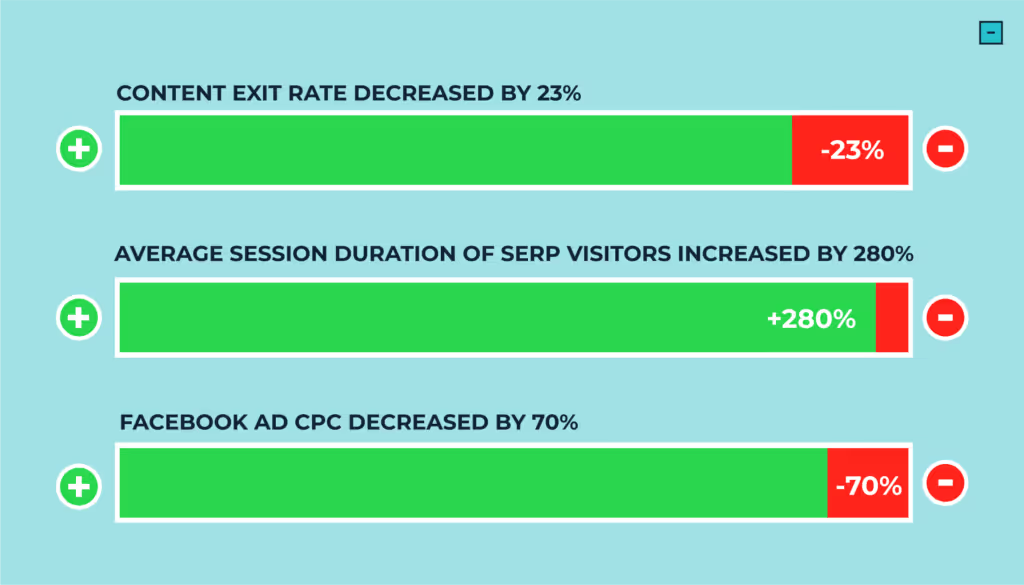5 Inbound Marketing Strategies Sales Managers Need to Know
5 Inbound Marketing Strategies Sales Managers Need to Know

The sales process is difficult for companies in just about every industry. Processes take time, and it’s never guaranteed that customers will buy from you, even after all that work. Without a consistent flow of leads, you’ll struggle to stay afloat and serve the customers you already have. So, how do you get around this challenge?
Common (and often difficult) solutions are cold calling and sending cold emails to prospects, hoping against hope that you’ll strike gold.
You may have tried to find more leads through inbound marketing, but it feels like you've hit a plateau in the traffic you're getting. But before you think of giving up on your efforts, here are five strategies that can help you succeed with inbound marketing.
1. Segment your clients
You already have a good idea of who you work with. You’ve identified your target audience and understand who they are.
You’ve also identified common challenges to businesses in your industry. This includes objections that customers might have, competing goals, and the values they represent.
While knowing this helps you go after the right prospects, you need more information like:
- Gender
- Annual income
- Interests
- Geographic location
- Age
- Pain points
One way to gather this information is to create a survey and send it out to your current customers and prospects. Their information will reveal recurring patterns that allow you to segment the entire target audience into groups that are easier to market to directly.
For instance, you might find out that you've only been marketing to men in their 30s in Central Florida. However, upon looking at your customers, you’ll realize that you’re selling to a more diverse group than you initially imagined. You've essentially been ignoring a particular segment of your audience because you never knew it existed.
Here’s a great example of audience segmentation from the Solutions page of Forms on Fire.

Each industry listed in the image above is an audience segment for this business.
Armed with this information, you’ll know the client segments to serve as you expand.
2. Audit your content
Is the content you've been producing still relevant to your target audience? Does it drive more traffic to your site as compared to your competitors? Are other people linking back to it? How well is it ranking for target keywords on popular search engines like Google?
If you want to answer this question, you will have to sift through a lot of content, measuring just how good everything you’ve put out there actually is.
Creating high-quality content isn't easy. So if you have blog posts that garnered tons of traffic and leads, you’ll need to update them regularly to extend their shelf life and get better rankings.
Codeless, a content marketing firm, did just that on one of its old posts. Take a look at the results in the image below.

Not all of your blog posts need an update, though. As you conduct your audit, look out for posts that:
- Have a high number of inbound links
- Are still getting traffic
- Have lots of social shares
- Talk about relevant and trending topics
As you update these posts, the goal is to improve their accuracy and make them easier to read. Remove irrelevant statistics and data, update the title, remove broken links, and add new and relevant ideas that have come up since originally publishing the content.
3. Start publishing fresh and relevant content
Your content audit is how you identify low-hanging fruit. It helps you get traffic to your site faster. However, you still need to position your blog as a go-to resource for recruitment-related information that people need.
According to Hubspot, marketers who spend most of their time and resources on blogging are 13 times more likely to get traffic, subscribers, and leads. To have a chance of getting such an impressive level of ROI, you need to be strategic.
You have to remember that there’s always intent behind every search a prospect performs on Google. They could be looking for more information on a specific topic, gauging the market, or searching for a specific company.
If you’re a lawyer, and your prospects are searching for “best injury lawyer,” they’re looking for an attorney specializing specifically in injury-related lawsuits. Depending on your niche, positioning yourself as a knowledgeable source of information in your industry can go a long way. You just have to make sure that you’re speaking to the intent of your audience. If you’re an injury attorney and you write blogs about traffic violations, that’s not going to help. You might pull people onto your website, but they’re not the people you want.
Your posts should include any keywords your ideal customer might be searching for in their quest to find what you’re offering. You also have to make sure that the content you’re creating actually addresses their issues. It’s not enough that they just find your content. It has to be relevant to them and contain quality information that they can use to solve their problems.
MOS does this by creating an in-depth guide on the best student bank accounts. It targeted the specific keywords that its audience was searching for and laid out how they could help ease pain points in a non-salesy manner.

Comparison content, where you list a series of solutions or services, can be particularly effective because it allows you to do more with less. GetSafe did this, as evident in the image below. It managed to capture traffic for nearly a dozen keywords using one post. That’s a lot more effective rather than writing 12 individual posts.

With more than 440 million blogs on the web, it has become harder than ever to stand out with content. You have to optimize everything you release and ensure that it hits certain quality standards.
Your content should be grammatically correct, have backed up sources, and address common issues facing your audience. Doing this will help you connect and build trust with your prospects.
4. Use lead magnets
There’s never a guarantee that every person who visits your website will actually return. That’s why it’s best to convince them of your value as a company before they leave. Doing this will impress your prospects and start the process of building a mutually beneficial relationship.
Lead magnets can help you start qualifying web visitors. Everyone who provides information through a lead magnet is subtly telling you that they might be interested in working with you when they’re ready.
Generating leads isn't easy, and, according to Venngage, 90% of marketers are frustrated with their lead generation efforts. The main reason for this is a lack of lead magnets.
Here’s an example in the image below:

The image above shows a blog post headline. The topic of this article might have drawn a prospect in, and it provides some good information. But many potential customers might just read this post and bounce away.
It’s the lead magnet that pops up later on this page that will seal the deal.

In addition to providing quality information, the author also gives the reader a lead magnet, offering them something of value in exchange for their email address. Namely, they offer a webinar that shows prospects how they can create an effective compensation strategy.
Think about what your prospects need to know. How can you add value to that information? What can you give them that will allow you to gather their contact information?
Write down your ideas and start testing them. You’ll soon be able to identify value and create a workflow that will allow you to implement your lead magnets.
5. Create a podcast
Podcasts allow you to reach a wider audience — one that prefers tuning in and listening to content as they go about their day.
According to Edison Research, 22% of Americans listen to a podcast every week. That means podcasting has become a huge medium and a great component of a well-rounded inbound strategy.
A branded podcast could help you build credibility with your audience and drive more traffic to your website. Podcasting is an intimate medium, meaning your listeners start to feel as though they actually know you. That gives them a built-in sense of trust.
To get more leads back to your site, create a podcast that speaks to the needs of your audience as it relates to what they can get from your business. Talk about topics your clientele will be searching for and provide the information they need. This could be answers to their questions or solutions to problems they’ve raised.
Getting a podcast started requires building relationships with other podcast hosts and appearing as a guest on their shows. This approach will help you gain a passive audience that you can build upon once you start hosting your own program.
In addition, you won't have to spend too much time thinking about what to talk about on your show. Since you already have a blog, repurpose some of your best content and discuss it on your podcast.
Wrap Up
With the inbound marketing strategies discussed in this post, you’ll no longer have to spend a fortune on ads. You also won’t have to spam potential clients with cold emails and calls, hoping against hope that you’ll find someone willing to sign up for your services. Once you get a lead list using these marketing strategies, outsource your sales outreach and have a team call and quality your leads for you.
Over time, you'll be able to stop worrying about getting new clients because they'll start finding you. This will give you more time to serve the customers you already have. So, get out there and start driving more leads to your site.
Take the faster path to growth. Get Smith.ai today.
Key Areas to Explore
Technical Implementation Terms
Voice user interface (VUl) design
Speech recognition integration
Text-to-speech optimization
API connectivity and webhooks
Real-time data synchronization

Your submission has been received!














.svg)



